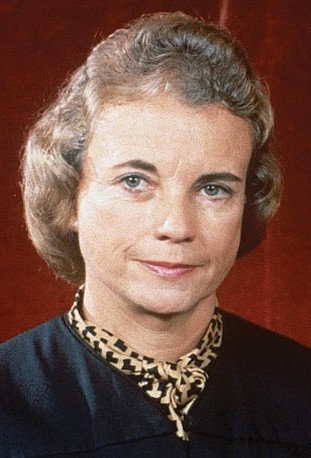Justice Sandra Day O’Connor will lie in repose at the Supreme Court on Dec. 18
Associated Press | 12/7/2023, 6 p.m.
WASHINGTON - Retired Justice Sandra Day O’Connor will lie in repose at the Supreme Court on Dec. 18, with a funeral service at the National Cathedral the following day, the court said Monday.
The first woman on the Supreme Court, Justice O’Connor died Friday, Dec. 1, 2023, at age 93 in Phoenix. She stepped down from the court in 2006 after serving as a justice for more than 24 years.
Members of the public will be able to pay respects at the court from 10:30 a.m. to 8 p.m. Monday, following a private ceremony. Tuesday’s service at the National Cathedral is private and by invitation only, the court said.
The family has asked that donations be made to iCivics, the group she founded to promote civics education, the court said.
Justice O’Connor died of complications related to advanced dementia and a respiratory illness, the Supreme Court stated in a news release.
Chief Justice John Roberts mourned her death. “A daughter of the American Southwest, Sandra Day O’Connor blazed an historic trail as our Nation’s first female Justice,” Justice Roberts said in statement issued by the court. “She met that challenge with undaunted determination, indisputable ability, and engaging candor.”
In 2018, she announced that she had been diagnosed with “the beginning stages of dementia, probably Alzheimer’s disease.”
Her husband, John O’Connor, died of complications of Alzheimer’s in 2009.
Justice O’Connor’s nomination in 1981 by President Reagan and subsequent confirmation by the Senate ended 191 years of male exclusivity on the high court. A native of Arizona who grew up on her family’s sprawling ranch, Justice O’Connor wasted little time building a reputation as a hard worker who wielded considerable political clout on the nine-member court.
While serving on the court, Justice O’Connor was known as an unwavering voice of moderate conservatism.
The granddaughter of a pioneer who traveled west from Vermont and founded the family ranch some three decades before Arizona became a state, Justice O’Connor had a tenacious, independent spirit that came naturally. As a child growing up in the remote outback, she learned early to ride horses, round up cattle and drive trucks and tractors.
“I didn’t do all the things the boys did,” she said in a 1981 Time magazine interview, “but I fixed windmills and repaired fences.”
On the bench, her influence could best be seen, and her legal thinking most closely scrutinized, in the court’s rulings on abortion, perhaps the most contentious and divisive issue the justices faced. Justice O’Connor balked at letting states outlaw most abortions, refusing in 1989 to join four other justices who were ready to reverse the landmark 1973 Roe v. Wade decision that said women have a constitutional right to abortion.
Then, in 1992, she helped forge and lead a five-justice majority that reaffirmed the core holding of the 1973 ruling. “Some of us as individuals find abortion offensive to our most basic principles of morality, but that can’t control our decision,” Justice O’Connor said in court, reading a summary of the decision in Planned Parenthood v. Casey. “Our obligation is to define the liberty of all, not to mandate our own moral code.”
Thirty years after that decision, a more conservative court did overturn Roe and Casey, and the opinion was written by the man who took her high court seat, Justice Samuel Alito. He joined the court upon Justice O’Connor’s retirement in 2006, chosen by President George W. Bush.








